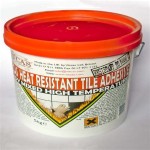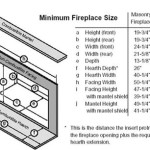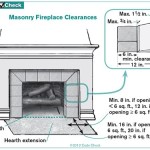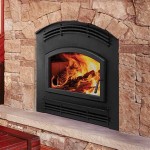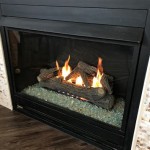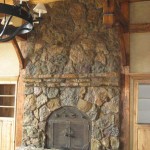Spanish Colonial Fireplace Mantels: A Defining Architectural Element
Spanish Colonial fireplace mantels represent a significant aspect of architectural design, reflecting a blend of European craftsmanship and indigenous influences. These mantels, prevalent in regions historically under Spanish control, serve both a functional and aesthetic purpose, acting as a focal point within a room while embodying a distinctive style characterized by specific materials, ornamentation, and overall design principles.Understanding the nuances of these mantels requires examining their historical context, common features, and their enduring appeal in modern architecture.
The Spanish Colonial style emerged during the period of Spanish colonization in the Americas, primarily from the 16th to the 19th centuries. This period saw the construction of numerous buildings, including homes, churches, and government structures, which incorporated elements of Spanish Renaissance, Baroque, and Moorish architectural traditions. These styles were adapted to the available local materials and influenced by indigenous art and design. Fireplace mantels, essential components in homes due to their heating and cooking functions, became prominent displays of this evolving architectural style. The mantels were often custom-designed, reflecting the wealth and status of the homeowner, as well as the skill of the local artisans.
The evolution of Spanish Colonial fireplace mantels can be seen through their changing materials and decorative elements. Early examples often featured simple designs constructed from readily available materials such as adobe, brick, or roughly hewn wood. As wealth and trade increased, more elaborate designs emerged, incorporating carved wood, imported tiles, and hand-forged ironwork. The influence of the Baroque style became evident in the use of ornate carvings, scrolling patterns, and religious motifs. The integration of indigenous artistic elements, such as geometric patterns and representations of local flora and fauna, further distinguished these mantels from their European counterparts. The combination of these various influences resulted in a unique and recognizable style that continues to be admired and replicated today.
Key Characteristics of Spanish Colonial Fireplace Mantels
Several key characteristics define the Spanish Colonial fireplace mantel. These features contribute to its distinctive appearance and help to distinguish it from other fireplace mantel styles.
Materiality: The choice of materials is a defining element of Spanish Colonial mantels. Wood, particularly hardwoods such as oak and walnut, is frequently used, often displaying a rich, natural grain. Adobe, brick, and stone are also common, particularly in regions where these materials are locally abundant. The use of these materials contributes to the rustic and durable appearance of the mantels. In many instances, a combination of materials is used to create visual interest and highlight specific design elements. For example, a mantel might feature a brick surround with a carved wooden overmantel. The use of tiles, particularly colorful hand-painted ceramic tiles, is another hallmark of the style, often incorporated as decorative accents or as a facing for the firebox.
Ornamentation: Spanish Colonial fireplace mantels are characterized by their intricate ornamentation. Carved wood is a common feature, with designs ranging from simple geometric patterns to elaborate floral motifs and religious symbols. The carvings are often deep and detailed, adding a sense of depth and texture to the mantel. Ironwork is another important decorative element, often used for the fire screen, andirons, and other fireplace accessories. Hand-forged ironwork adds a touch of rustic elegance to the mantel, complementing the other materials. Tiles, as previously mentioned, are frequently used to add color and pattern. The tiles are often hand-painted with intricate designs, reflecting the artistic traditions of the region. The use of corbels, pilasters, and other architectural details further enhances the visual appeal of the mantels.
Design and Form: The overall design and form of Spanish Colonial fireplace mantels vary depending on the specific region and time period. However, certain common elements can be identified. Many mantels feature a simple, rectangular form, with clean lines and a balanced composition. Others are more elaborate, with curved lines, scrolled details, and asymmetrical arrangements. The size of the mantel is often proportional to the size of the room, with larger mantels dominating the space and creating a focal point. The presence of an overmantel, a decorative panel above the mantel shelf, is another common feature. Overmantels can be simple or elaborate, featuring carved wood, paintings, or mirrors. The overall design of the mantel often reflects the architectural style of the building, creating a cohesive and harmonious aesthetic.
Regional Variations and Influences
Spanish Colonial fireplace mantels exhibit regional variations and influences, reflecting the diverse cultural and artistic traditions of the areas where they were created. These regional differences can be seen in the materials used, the decorative motifs, and the overall design of the mantels.
Southwestern United States: In the Southwestern United States, including states like New Mexico, Arizona, and California, Spanish Colonial fireplace mantels often feature adobe and brick construction, reflecting the availability of these materials. The mantels are typically simple in design, with clean lines and a rustic appearance. Carved wood is often used as a decorative accent, with designs inspired by indigenous art and culture. The use of colorful ceramic tiles is also common, adding a touch of vibrancy to the mantels. The influence of the Spanish Mission style is evident in many of these mantels, with simple, unadorned forms and a focus on functionality.
Mexico: In Mexico, Spanish Colonial fireplace mantels are often more elaborate and ornate, reflecting the wealth and status of the homeowners. Carved wood is used extensively, with intricate designs inspired by the Baroque and Churrigueresque styles. The use of gold leaf and other precious metals is also common, adding a touch of luxury to the mantels. Tiles are frequently used to create elaborate patterns and mosaics, reflecting the country's rich artistic heritage. The influence of indigenous art is also evident, with designs incorporating ancient symbols and motifs.
Latin America: In other parts of Latin America, Spanish Colonial fireplace mantels exhibit similar regional variations, reflecting the unique cultural and artistic traditions of each country. In some regions, the mantels are simple and rustic, reflecting the rural character of the area. In others, they are more elaborate and sophisticated, reflecting the influence of European art and design. The use of local materials and techniques is a common thread throughout the region, ensuring that each mantel is a unique reflection of its place of origin.
The Enduring Appeal and Modern Applications
Spanish Colonial fireplace mantels continue to hold enduring appeal in modern architecture and interior design. Their timeless aesthetic, combined with their ability to evoke a sense of history and tradition, makes them a popular choice for homeowners and designers alike.
Restoration and Preservation: Many original Spanish Colonial fireplace mantels have been preserved and restored, allowing future generations to appreciate their beauty and craftsmanship. These restored mantels often serve as focal points in historic homes and buildings, adding a sense of authenticity and character. Preservation efforts typically involve careful cleaning, repair, and restoration of the original materials, ensuring that the mantels retain their original appearance and integrity. In some cases, missing or damaged elements are replaced with reproductions made using traditional techniques and materials.
Replicas and Reproductions: In addition to original mantels, replicas and reproductions are widely available, allowing homeowners to incorporate the Spanish Colonial style into their homes without having to acquire an antique. These reproductions are often made using modern materials and techniques, but are designed to replicate the appearance of original mantels. The quality of reproductions can vary widely, so it is important to choose a reputable manufacturer that uses high-quality materials and pays attention to detail.
Modern Adaptations: Spanish Colonial fireplace mantels can also be adapted to suit modern design sensibilities. This might involve simplifying the design, using more contemporary materials, or incorporating modern technology, such as electric fireplaces. The key is to maintain the essence of the Spanish Colonial style while adapting it to the needs and preferences of the homeowner. For example, a modern adaptation might feature a simplified mantel with clean lines and a minimalist design, but still incorporate elements such as carved wood or ceramic tiles to evoke the Spanish Colonial aesthetic. The versatility of the style allows it to be seamlessly integrated into a wide range of architectural settings, from traditional to contemporary.

Spanish Colonial Project Interiors Style Bedroom Homes Fireplace

The Spanish Style Fireplace A Rich Colorful Heritage

Celebrity Houses Archives Home Fireplace Spanish Style Homes Mediterranean Decor

The Best Amazing Fireplace Tile Ideas For Your Living Room Wohnideen Schlafzimmer Dek Spanish Style Furniture Bathrooms Colonial Decor

Spanish Style Fireplace Architecture Colonial Mexican Home Decor Homes

Spanish Fireplace Photos Ideas Houzz

Day 11 Spanish Colonial Interiors Decor To Adore

Defining Elements Of Spanish Style Design Wrought Iron Light Fixtures Illuminaries Lighting

Spanish Style Fireplace Mantel With Decorative Tile Mediterranean Living Room Santa Barbara By Home Design Houzz

Beautiful Spanish Fireplace Design 9 With Reclaimed Wood Mantel

